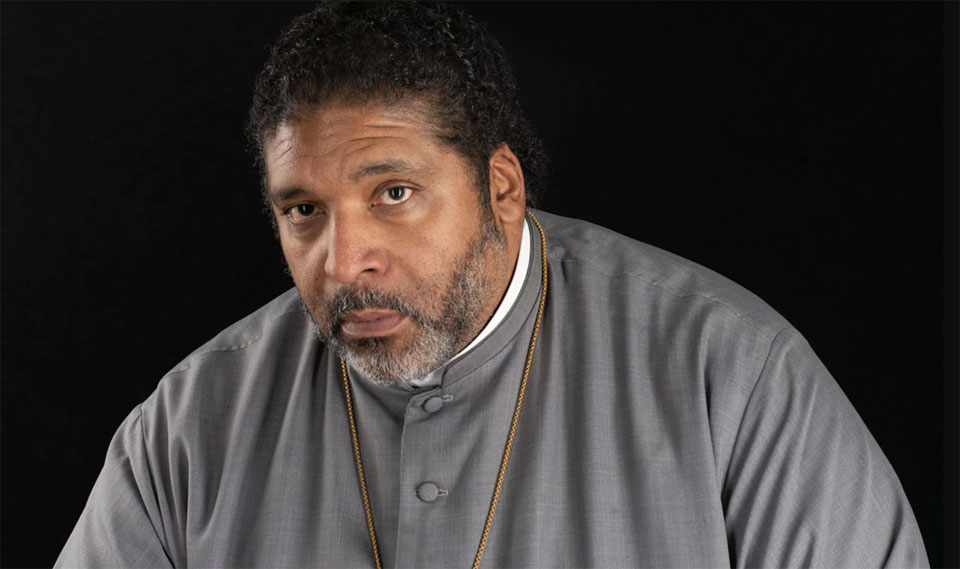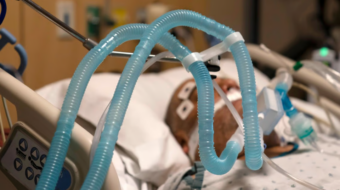
WASHINGTON—Poverty is inextricably linked with the almost one million U.S. deaths, so far, from the coronavirus pandemic, a new and detailed report says. And the county-by-county statistics also reveal a disproportionate impact on people of color, it adds.
A Poor People’s Pandemic Report: Mapping The Intersection Of Poverty, Race And Covid-19—the formal name for the coronavirus—should serve as a resounding call to the entire country to attack the systemic ills which preceded the modern-day plague and only worsened it, said Poor People’s Campaign (PPC) Co-Chairs the Revs. William Barber II and Liz Theoharis.
While more non-Hispanic whites than any other group have died from the virus in conjunction with poverty, people of color have been disproportionately impacted, the report reveals.
Accompanied by poor and low-wealth speakers, some via zoom, from Jackson, Miss., Wausau, Wis., the Bronx, Goldsboro, N.C., and the Apache Nation in Arizona, speakers and investigators laid out the detailed research which should force policymakers to act on the problems. Those policymakers haven’t, so far.
Instead, policies have been deliberately crafted, Barber told a D.C. press conference, to worsen conditions for the estimated 43% of the U.S. who are poor or low-wealth, living paycheck to paycheck—if they even have paychecks.
“Covid-19 did not discriminate, but we did,” Barber said of the conditions—low income, poor housing or homelessness, lack of adequate funding for education, unavailable or too-costly health care, and more—that predated the pandemic and worsened it for the victims. “It does not have to be this way.”
Some “80% of the pandemic aid” went to corporations and the rich. The ultra-wealthiest class in the nation “exploit the tragedy” and enriched themselves by $2 trillion since the pandemic was first declared in March 2020, he added. Meanwhile, “poor people suffer.”
“A poverty-producing and sustaining system was also a death-dealing system. Within this analysis, we can see that it did not need to be this way, if only we were honest about poverty and systemic racism, and the systems of violence that allowed this tragedy.
“This is the painful truth we must confront before we can ever heal, before we can confront these systems of gross injustice, and before we can live into the promise of this nation.”
“We cannot say this is because of individual choices or behaviors. Something deeper is at work–systems that prey on the poor, poor white people and poor people of color.”
The figures themselves are damning. The report divides the nation’s 3,042 counties up into tenths—the tenth with the highest median incomes per person ($92,000-$142,000) down to the tenth with the lowest ($12,000-$46,000), and compared Covid-19 disease and especially death rates.
The median is the point where half the population is above and half below. The report defines the poorest counties as those with median per-person incomes under $28,000 yearly for a single person and double that for a family. Those are double the official federal poverty lines, which have not been updated in decades.
The overall Covid-19 death rate in the nation’s poorest counties is double that in the richest counties, even though the poorest counites have some residents whose incomes are above the median and the richest counties contain pockets of poverty.
“Covid-19 has been a poor people’s pandemic,” Theoharis stated.
The numbers are damning. So are the stories.
Jessica Jimenez, a 10-year caregiver from the Bronx, said she had to use pandemic aid “to make sure there was food on my table” for herself and her four kids. Her sister, a hospital worker, “got covid three times.”
“Not being able to pay the rent or pay bills on time was one of my biggest worries.”
Democratic President Joe Biden’s Build Back Better bill, now marooned in the Senate due to opposition from all 50 Republicans and renegade Democrats Kyrsten Sinema and Joe Manchin, is supposed to help shore up the safety net Jimenez and others need.
Northern Wisconsin PPC Chair Bruce Grau noted that his hometown, Wausau, is 80% white, but more than 50% poor. “Our rates of deaths and hospitalizations led the state” and in one nursing home, 15 of the 18 residents died, due to short-staffing as the home’s owners pursued profits.
“Had the CEO invested in more staff, some of those people could have been saved,” he said. Marathon County, whose seat is Wausau, has a median income of $62,233, but a quarter of its people live below that $28,000 poverty line—and it’s suffered 342 deaths per 100,000 people.
And the federal government first had drug companies use Indigenous people as “guinea pigs” to make sure the anti-virus vaccines were safe and effective, said Vanessa Nosie of the Apache Nation. But when the vaccines proved their worth, all of a sudden the federal Indian Health Service didn’t provide them.
“Our lives weren’t valued,” until the Apache Tribal Council’s chairman, using the tribe’s own money went out and bought the vaccines for their people.
Overall, the pandemic began with roughly equal death rates among the groups of counties, the report says. But that didn’t last long, and ratios only worsened when pandemic surges, including those of the delta and omicron variants, hit, said Poor People’s Campaign Policy Director Shailly Gupta Barnes.
In the winter of 2020-21, the first surge, the ratio of deaths in the poorest 300 counties was four and a half times that in the richest counties. When the delta variant hit, the death rate in the poorest counties, those where 42%-92% of residents earn below the median, was five times that of the richest counties. Omicron’s onset produced a death rate in the poorest counties three times that of the richest.
That’s important because another variant, BA-2, is increasing, even as Congress wrangles over further anti-pandemic funds needed to provide testing and vaccinations. Republican obstructionism has forced the Democratic Biden administration to cut its request down to $10 billion—it was double that—and the GOP is delaying even that sum.
The higher death rates are also more prevalent in the South and Southwest, though poor Northern counties, like the Bronx, also appear. And, while it’s not in the report, the federal Centers for Disease Control map of coronavirus rates by county shows spots of yellow (“caution” warranted) and orange (“danger”) counties scattered nationwide—except for one huge cluster, combined yellow and orange, covering the traditional and very poor coal country of Appalachia.
So, for example, Galax County, Va., has a median income of $33,575, and 49.85% of its people live below 200% ($28,000) of the federal poverty line of $14,000 yearly for a single person. It also has a coronavirus death rate of 1,134 per 100,000 people. It’s in Southwest Virginia coal country.
The richest county, Loudoun, Va., in the D.C. suburbs, has a per capita income of $142,299, 10.2% live below the poverty line, and it’s suffered 84 deaths per 100,000. Both Loudoun and Galax are more than three-fourths non-Hispanic white.
Half of all Bronx residents live below the report’s $28,000 poverty line, the median income is $40,088, and its death rate—much higher when the pandemic began—is 538 per 100,000 people, the report notes. The Bronx is 9% Non-Hispanic white, 43.6% Black, and, showing how Hispanic people overlap the other two groups, 56% Hispanic.
The entire report, including interactive graphics and maps, can be found HERE.










